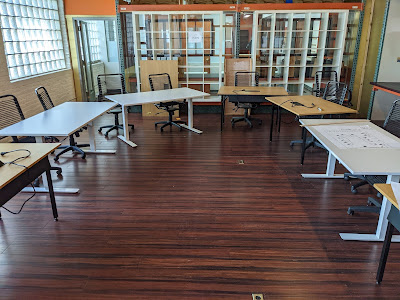Welcome back to my blog. This post is for the Orientation 2021 Action Project. In this AP we are asked to recreate a classroom in our school building to make an effective learning space. Earlier in this orientation week, we looked at classrooms from different time periods and discussed if they were good learning spaces. We also had an Field Experience at the Pritzker Pavilion in Chicago to see the Sonic Pavilion Festival. This FE helped us understand how sound can travel around a space and if it can be used in a classroom.
The first part to developing an effective learning environment was to establish a successful student and teacher. The students and teacher should keep up a social contract that explains the expected behaviors of participants in a classroom. I think a successful student would be someone who participates, asks thoughtful questions, is respectful to other students and teachers, and is hardworking. A successful teacher would be someone who is open to feedback, encourages questions, enjoys teaching, and is helpful to students. I think having teachers and students with these qualities are important to making a good classroom.
The next part of creating a working classroom was to design it. In a large group we thought about different ways one of our classrooms could be redesigned. After observing everyone's drafts we created a blueprint for how the room would look. We then moved the tables around the room to match the blueprint.
CH, Cabin Blueprint, 21
GHS, Cabin Design, 21
This layout should allow every person in a chair to see the front of the class which is where the teacher and whiteboard would be. The tables are staggered in a "U" shape to keep students spaced out in accordance to the CDC guidelines for Covid-19. Along the right wall are small spaces where students can work while still having view of the whiteboard and teacher. If there is a guest that visits the classroom, they can have the space to walk around in the middle of the tables or be by the whiteboard. The teacher can sit off to the side in their work area.
I believe this design will work for upcoming classes in the space. I enjoyed working on this Action Project with my group. Because of the groups being mixed cohort I also learned a little about the new students and some returning students I didn't really interact with before. Starting school again in person is definitely exciting. Covid-19 still has an effect on our learning but these new classroom designs should be able to deal with that. I have not seen any other rooms that were redesigned by other groups but I am very excited to see what has changed. Thank you for reading and I hope to see you in the next blog.


Comments
Post a Comment